
8 minute read
Motorsport
live on a tiny island in the remote San Blas archipelago, part of the Guna Yala region in Panama. Guna Yala is the nation of the Guna people, an indigenous group small in stature but big in spirit. The Guna Crossroads of the Americas are one of Panama’s seven native tribes and fought to have autonomy over their land, which includes a 232-mile-long strip of the Caribbean coast from the Colombian border. Most of the Guna live in the San Blas
Panama might be a wisp of a country but it packs a diverse punch, says Laura Gelder Islands but climate change is forcing them to look shoreward where a town is being built on higher land. We’re on one of the four main inhabited islands, Gardi Sugdub,
Advertisement
I’m pretty sure the iguana is I knew he was a Monty Python where around 2,000 people live dead. I glance at my friend, fan. “This is an ex-lizard,” I say. At this despite it being just 400 metres long Mick, wondering if he’s point we start to fall about laughing, and 150 metres wide. Every inch of thinking what I’m thinking. He much to the amusement of the kids. space seems to be filled and the looks as bemused as me and more We can’t really explain to them the houses, fashioned from corrugated children gather round, excitedly parallel between their pet reptile iron, reeds and bamboo, extend out poking the poor thing through the and Monty Python’s famous dead over the water in places. cage with sticks. parrot sketch because As we cross the island
“This lizard is deceased,” I hiss to they’d never understand we happen upon Mick. out of the corner of my mouth. – the children don’t two nattily-dressed
“No, no it’s just resting,” he retorts. speak English and Panama Mormons, who wave
THE CALDERA RIVER, BOQUETE
Santiago La Palma
at us cheerfully, their black suits and crew cuts incongruous next to a local woman hanging out her washing. Like most Guna women she’s dressed in vivid clothes sewed with molas, colourful embroidered squares of fabric.
I’m dubious about much impact the Mormons have had on this matriarchal society and as we duck into a hut to attend a puberty ceremony, I’m thinking… not much. Held to mark a girl’s coming of age, it’s attended by a large crowd. Within the palm walls it’s dark and a bit steamy and everyone, including teenagers, are drinking a boozy brew of fermented sugar cane as a storm gathers outside. The Guna have welcomed Mormonism, our guide explains, but they still have their traditional beliefs, which are stongly rooted in nature, and continue to be wholly accepting of transgender members of the community – they call it the ‘third gender’.
The next day I awake on Aguja Island and find I have arrived in the Caribbean of my childhood drawings, a place where tiny whitesand islands glint on every horizon, some festooned with just a single palm ruffled by the salty breeze. There are no high-rise hotels, no hotels really – just tiny guesthouses offering beds in basic wooden huts. There are no sun loungers, just solar-faded hammocks strung up between palm trees. And there is no Starbucks, Haagen Dazs or any other brands, just fresh seafood delivered by dug-out canoe and served with coconut rice.
We pick a few islands at random, snorkelling to shore through turquoise water and picking our way across bleached driftwood, coconut husks and pink conch shells to ramshackle huts to meet the smiling Kuna owners, who are always happy to share their paradise if we take a look at their molas for sale.

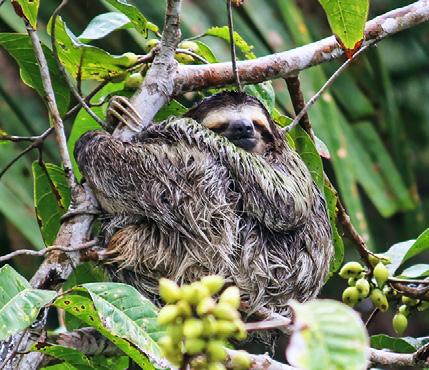
CASCO VIEJO
Back to reality
We don’t want to leave Eden, but the capital calls us back. Panama City has been around since 1519 and was the first Spanish settlement on the Pacific side of the Americas. It was this decision, along with its narrow geography, which sealed its fate as a strategically important spot.
The ruins of Panama Viejo are all that’s left of the city’s first site, where tonnes of Incan gold passed through in the 1500s on its way to Spain. After a ransacking by Sir Francis Drake, privateer Henry Morgan pillaged the city and razed it to the ground. It was reborn in what is now known as Casco Viejo or the Old Quarter.
This is Panama City’s jewel, a compact maze of narrow streets and pretty plazas with pavement cafes begging to be frequented. Around each corner are grand churches, market stalls selling Panama hats and streets of distressed buildings, with pink, ochre and green paint peeling behind sprays of bougainvillea. The tide of gentrification is obvious in boutique hotels like Casa del Horno, but from the balcony of its penthouse suite,


CASA RUIZ
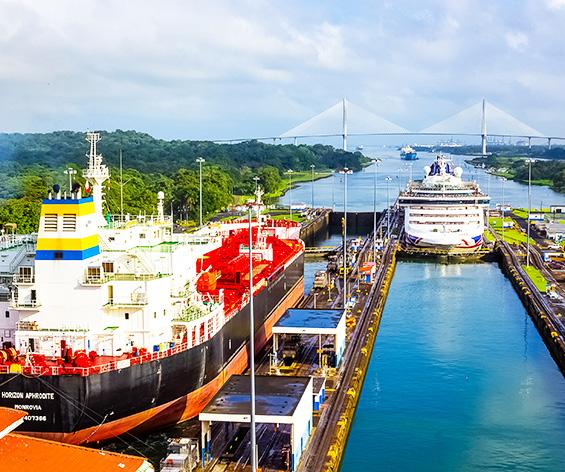
MIRA FLORES LOCK, PANANA CANAL
with hip exposed brick walls, I can see into the disintegrating slum opposite where little kids play.
The most beguiling thing about Casco Viejo is its juxtaposition with the new Panama City. From the cool rooftop bar of hotel Tantalo, we sip a mojito and gaze upon the sparkling skyline of the modern city across the bay. Stand-out skyscrapers are the crazy corkscrew of the El Tornillo building and the sail-shaped JW Marriott, the highest tower and once Donald Trump’s Ocean Club hotel and condos, which was accused of being a centre for Colombian cartels to launder their drugs money.
Being a tax haven at the crossroads of the Americas means Panama has always drawn less than scrupulous types – like the infamous Brit John Darwin, who faked his own death via a canoe accident and came here to live off his own life insurance.
Let’s just say that the capital attracts characters. In a café I get chatting a nice American who claims to be one of the CIA agents who captured Panamanian despot Manuel Noriega in 1989. Now retired and enroute to the Caribbean isles of Bocas del Toro, he’s sporting a Hawaiian shirt and a novelty baseball cap and shows how much has changed here since Noriega – dictator, rouge CIA spy and drug trafficker – was in charge.
Panama City is an interesting mishmash of cultures. The population are mostly of Spanish or indigenous descent, but many have African heritage and there’s a big Chinese community. Much of this multiculturalism comes from the building of the Panama Canal, one of the world’s man-made wonders. Watching monster container ships pass through Mira Flores Lock is strangely absorbing. Nearly 14,000 ships cross the 80km canal every year, taking four hours, displacing 220 million litres of water per ship and generating millions of dollars.
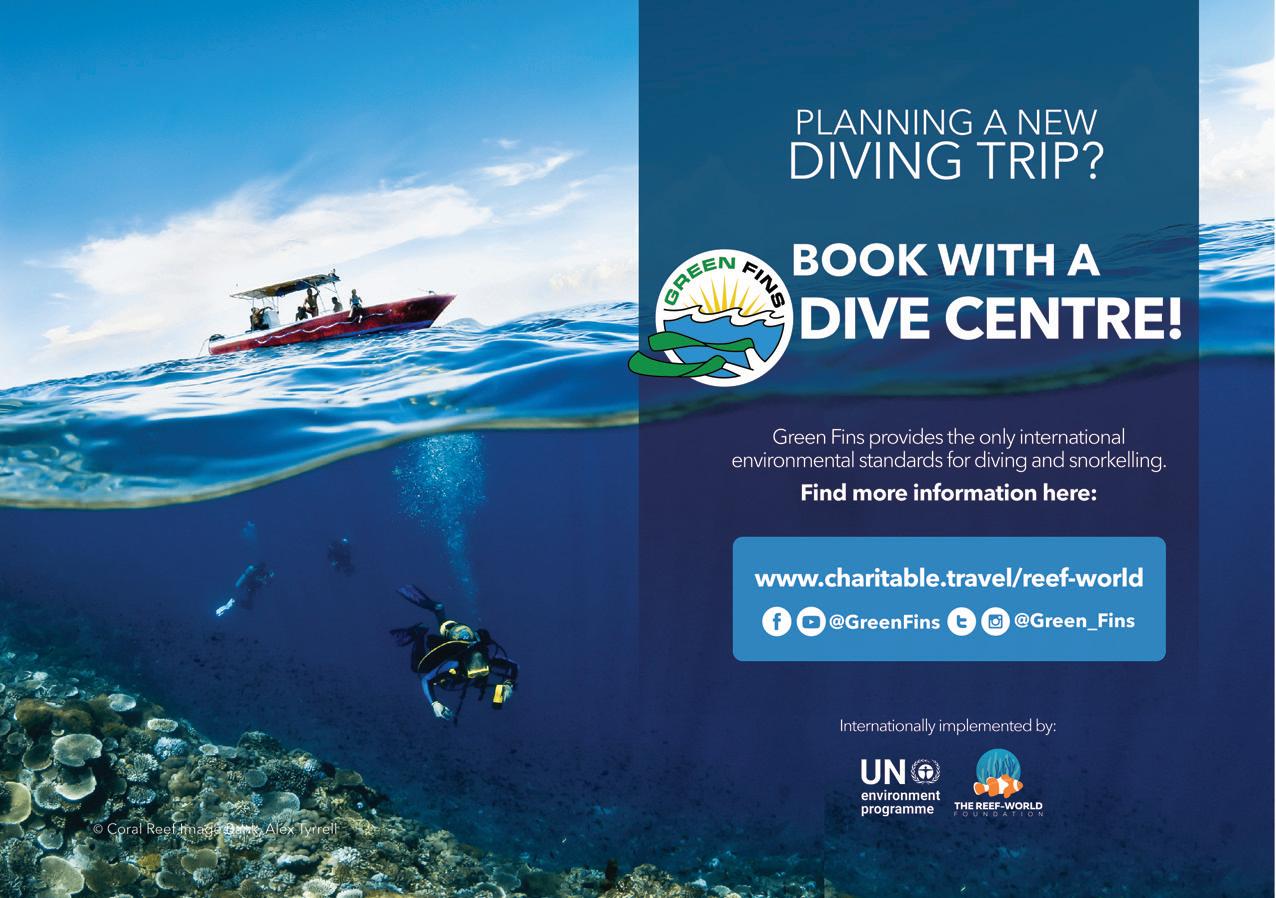
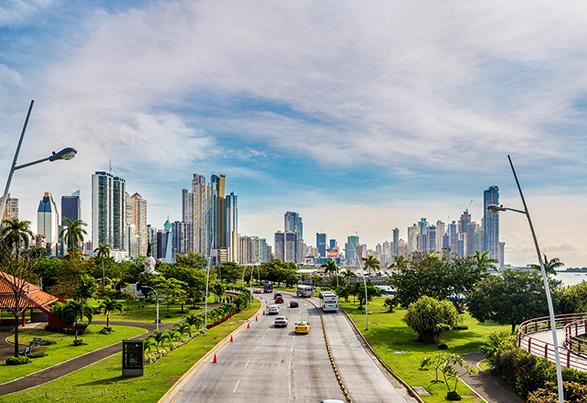
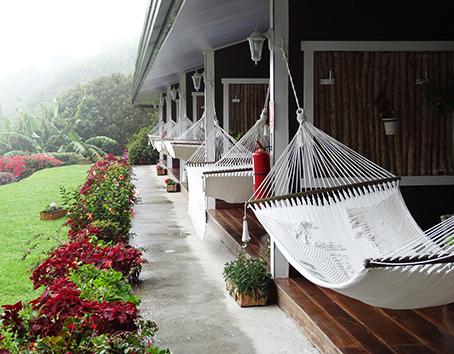
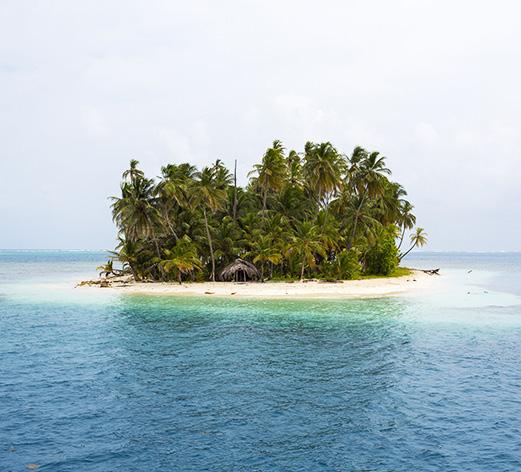

The fertile volcanic soil helps to make the world-class coffee but it also boosts the locals’ vegetable patches and the flowers that run riot at the side of the road
FINCA LERIDA
It’s worth visiting the lock’s museum to understand the human cost of building in a yellow-fever-infested swampland, and the extraordinary efforts that go to thwarting nature’s attempts to reclaim it.
Natural highs
world, the Chiriquí Highlands. Boquete is the base for exploring Panama’s coffee region and the air is pleasantly cool as we drive through misty valleys and past the rushing torrent of the Rio Caldera. The river runs off Volcán Barú, a dormant volcano and Panama’s The canal was partly created by highest point. It’s the fertile volcanic nature, since the Chagres River soil which helps make the coffee already existed. But the building of world-class, but it also boosts the red which signals the resplendent it created Gatun Lake, now the site vegetable patches of strawberries, quetzal bird, but it’s time to wake up of eco-resort Gamboa where we onions and cabbage which adorn and smell the coffee. spend a day spotting wildlife. It’s just every local’s garden and the flowers At plantation Casa Ruiz we take an hour from the city but on a boat that run riot at the side of the a bean-to-cup tour from another trip we see capuchin and tamarin road. It’s no wonder this lush and of Panama’s characters, Carlos. It’s monkeys hanging from the trees, beautiful place is so popular with not his encyclopaedic knowledge of iguanas scampering the banks and retired expats and we meet many coffee, or his passion for the organic crocodiles lurking offshore. Even in the local cafes, sipping coffee environment in which the beans inside the resort grounds capybara without a care in the world. grow here, amongst mango, guava rambled and we glimpse a blinking The area’s most famous flower and avocado trees, but his insight sloth dangling from a tree. In nearby is the angel’s trumpet. Peach and into Boquete living that provides Soberanía National Park it feels a cream coloured, they hang like the entertainment. He asks us, thousand miles from the city and we magical ornaments from every wall mischievously, what Boquete’s most walk in hushed silence through the at hotel Finca Lerida, where I spot common bird is. According to Carlos jungle, spying the silhouettes of the blur of a hummingbird. it’s the snowbird – that not-so-rare toucans flitting above. I could stay here all day, breed of retired North American
After a one-hour flight Right listening to the rain and who flies south for winter to nest from Panama City we arrive in another to live looking out for the flash of green and in this beautiful place. I can’t say I blame them.
Indigenous groups like the Guna are threatened by climate change and habitat destruction. Survival International works with them to amplify their voice and save their way of life. survivalinternational. org THE SAN BLAS ISLANDS
PANAMA CITY SELLER










